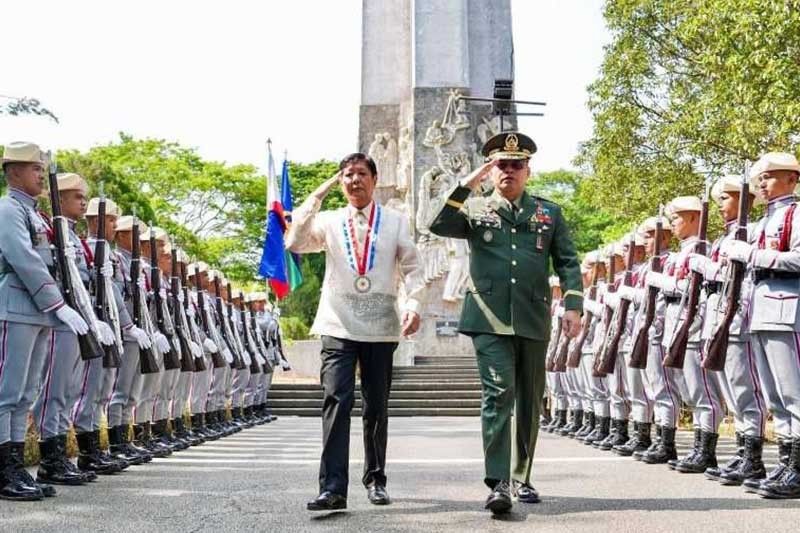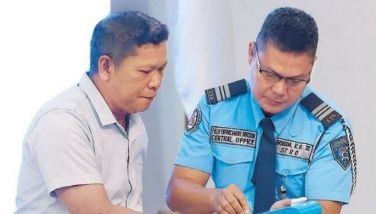Marcos: Philippines won’t allow offensives from new EDCA sites

MANILA, Philippines — President Ferdinand Marcos Jr. said Monday that the Philippines would not allow bases being used by American troops as part of the Enhanced Defense Cooperation Agreement for launching offensive attacks.
“We will not let any of our bases be used for whatever offensive action,” Marcos said in Filipino at the sidelines of the Day of Valor commemoration in Bataan. “These are just to help the Philippines if the country needs any help.”
Marcos’ comments came a day after Chinese Foreign Ministry spokesperson Mao Ning warned that the addition of four more bases to be used by US troops under the EDCA “may draw [the Philippines] into the whirlpool of a potential conflict in the Taiwan Strait.”
But Marcos said the addition of four new EDCA sites in Cagayan, Isabela and Palawan should not worry China.
“If no one is advancing towards us, they should not worry because we will not fight them,” he said. “What we are doing is continuing to strengthen the defense of our territory and the republic.”
Sen. Ronald dela Rosa, a vice-chairperson on the Senate defense panel, called Mao’s statement a “strategy” to discourage the Philippines from honoring its commitment with the US under EDCA.
“That’s a strategy. But we should not be fazed. [China] has long bullied us, why would we let them bully us further?” Dela Rosa said in Filipino in a virtual press briefing.
Malacañang announced last week that the four new sites will be in Cagayan’s Naval Base Camilo Osias and Lal-lo Airport, Camp Melchor Dela Cruz in Gamu, Isabela, and Balabac Island in Palawan.
With the four new sites, there are now nine military sites that US troops have access to for training and keeping supplies related to humanitarian relief efforts in the Philippines.
Key partner
The first five sites are located in Cebu, Cagayan de Oro, Nueva Ecija, Palawan, and Pampanga. The US has provided over $83 million to pursue the approved 21 bilateral projects in existing locations.
The agreement was signed in 2014 as a supplementary deal to the existing Visiting Forces Agreement between Manila and Washington. While it provides US troops access to military facilities, the Philippines retains its sovereignty over the agreed locations and the Philippine president is the one who approves which military base would be included in the agreement.
The VFA is a decades-old treaty, but the presence of US troops in the Southeast Asian country remains a sensitive issue.
The United States had two major military bases in the Philippines but they were closed in the early 1990s after growing nationalist sentiment.
US troops return to the Philippines every year for joint military exercises, including Balikatan, which kicks off next week. With more than 17,000 soldiers taking part, it will be the largest yet.
The pact stalled under former President Rodrigo Duterte, who favored China over the Philippines' former colonial master.
But Marcos, who succeeded Duterte in June 2022, has adopted a more US-friendly foreign policy and has sought to accelerate the implementation of the EDCA.
Marcos has insisted he will not let Beijing trample on Manila's maritime rights.
While the Philippine military is one of the weakest in Asia, the country's proximity to Taiwan and its surrounding waters would make it a key partner for the United States in the event of a conflict with China. — Xave Gregorio with reports from Kaycee Valmonte, Helen Flores/The STAR, AFP
Related video:
- Latest
- Trending




























